#017
Solving social problems from
a different perspective as a designer
Takuya Onishi
Japanese Color: HANAASAGI-iro
#017
Takuya Onishi
Japanese Color: HANAASAGI-iro
MOVIE

Associate Professor
Faculty of Environment and Information Studies
Poverty, education, economy, resources, environment—Many of the social problems confronting the world are closely related to energy.
To date, energy issues have often been debated from the perspectives of engineers, politicians, and investors. However, Associate Professor Takuya Onishi takes his approach from the perspective of a designer in his call to transform the world through energy design.
Associate Professor Onishi is engaged in research on social contribution through energy design. What kind of future does that lead us toward?
Today, changes are emerging in the ways that we engage with energy. It has become easier for us to handle energy; for example, individuals can carry solar devices around to charge their mobile phones, or bring along battery packs to use their communication and electronic devices even in the mountains. Unlike the conventional form of energy that we had to plug a device into a power socket before we could use it, a new world of energy has begun.
My intuition tells me that there is potential for bringing about significant changes to the countless social problems that are building up around the world, through a reconsideration of our relationship with energy. My students and I are conducting trials and tests repeatedly to identify the types of design solutions* that are effective in solving these problems, with the aim of eventually reaching a phase of project implementation.
When driving social contribution projects such as projects on the utilization of renewable energy, it is vital to have the ability to steadily build up a store of ideas that are feasible and can be put into practice, as well as to be able to come up with a vision, and propel and improve the project from outside the field. Design serves as this ability “from outside the field.” The involvement of a large number of people is indispensable to the success of a project. How much more appealing should a project be in order to attract people to be participants and supporters of the project? I believe that my role, as a designer, is to come up with these ideas.
*To design a method for solving the problem
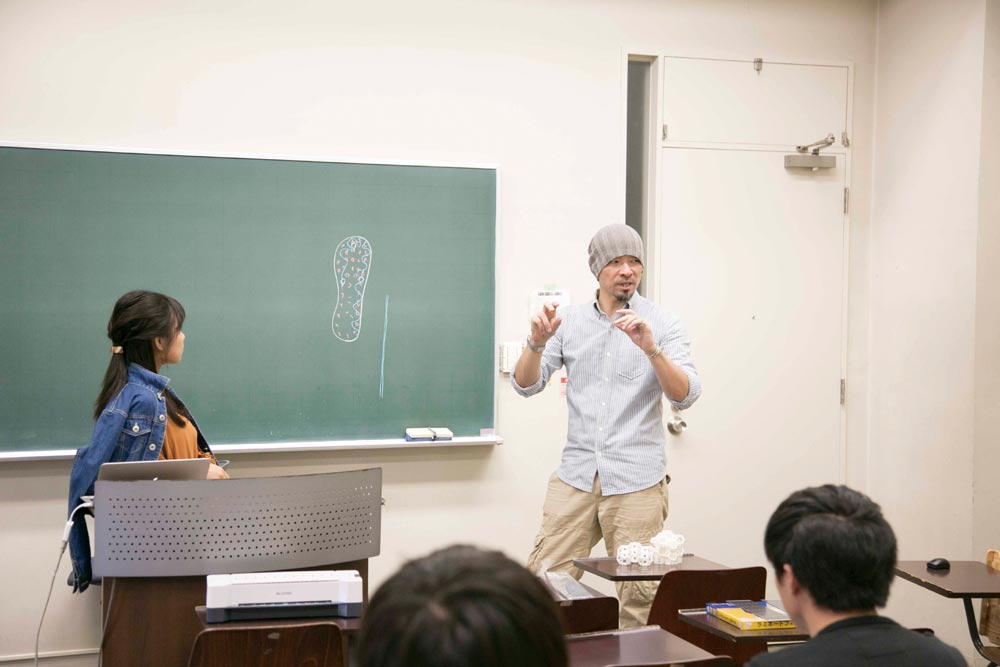
In 2010, I established an energy design company named “ENERGY MEET,” which works together with clients on projects. The specific contents of these activities vary widely, including participation in design events, engaging in social contribution activities such as presenting used solar panels to areas that have not undergone electrification, organizing conferences for local government bodies, providing consulting services that offers potential energy proposals that match the needs of the individual cases, and developing power generation devices.
We also position the establishment of an ultra-long term vision as an important part of our work. For example, the global population is set to exceed 10 billion people by the year 2100, and energy and food problems are expected to reach a critical level. With the aim of overcoming this crisis, we came up with a method known as “SKYHARVEST” that we have disseminated information about. This project involves building solar systems and zero-gravity farms in space, and connecting it with the Earth’s surface through a space elevator. As a designer, I believe that it is my mission to tackle projects of a scale that is far removed from our everyday lives, create projects based on ideas that are not bound by technological, political and economic limitations, and present these ideas to the world.
I believe that the mission of a designer is, sometimes, to sketch our dreams and indicate the direction toward the future, as well as to help others feel that there is some hope in following that direction. I think that the presence of such people is precisely the reason why we are able to explore and develop a new future.
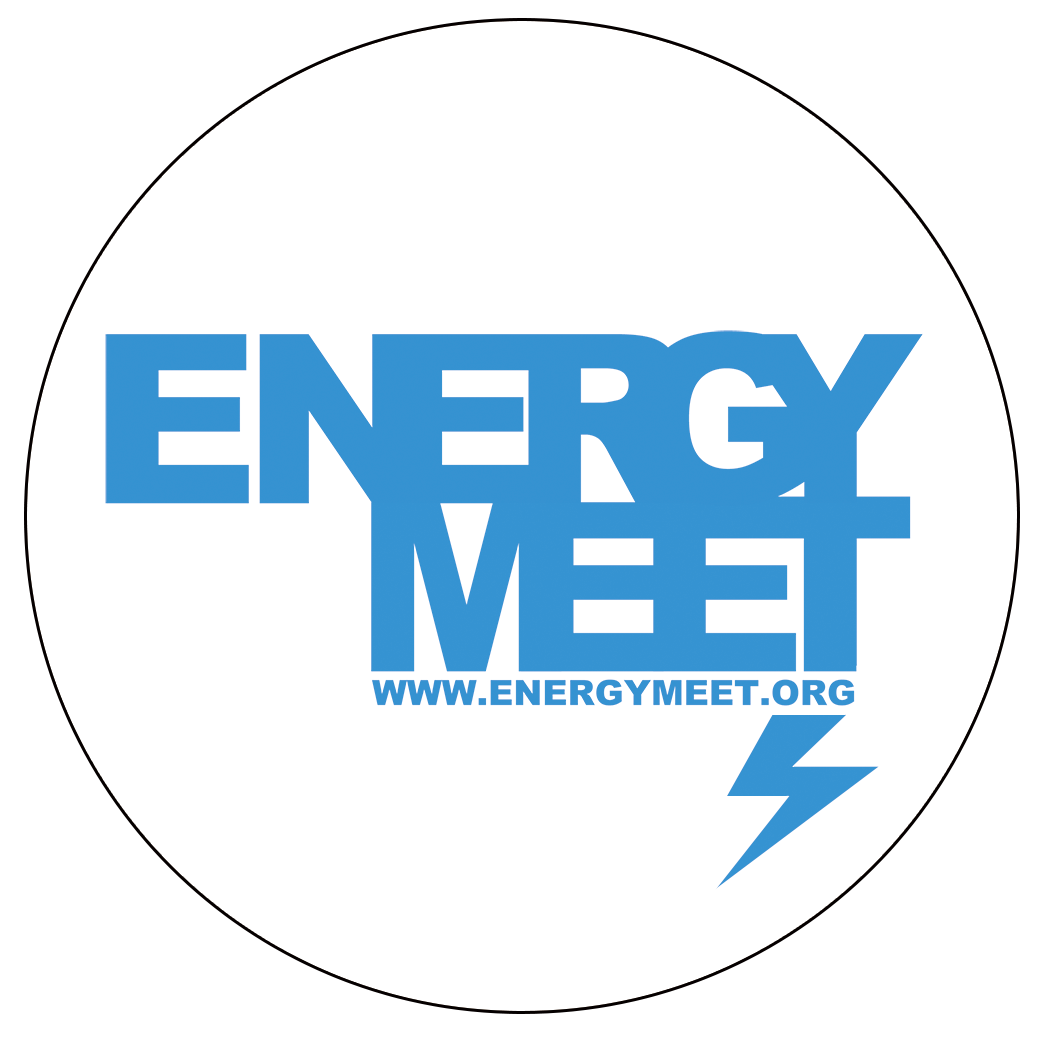
Established in 2010. It approaches energy issues through creative work, and aims to connect energy and society. It is engaged in a wide variety of activities, including design, consulting, media management, human resource development, and social contribution.
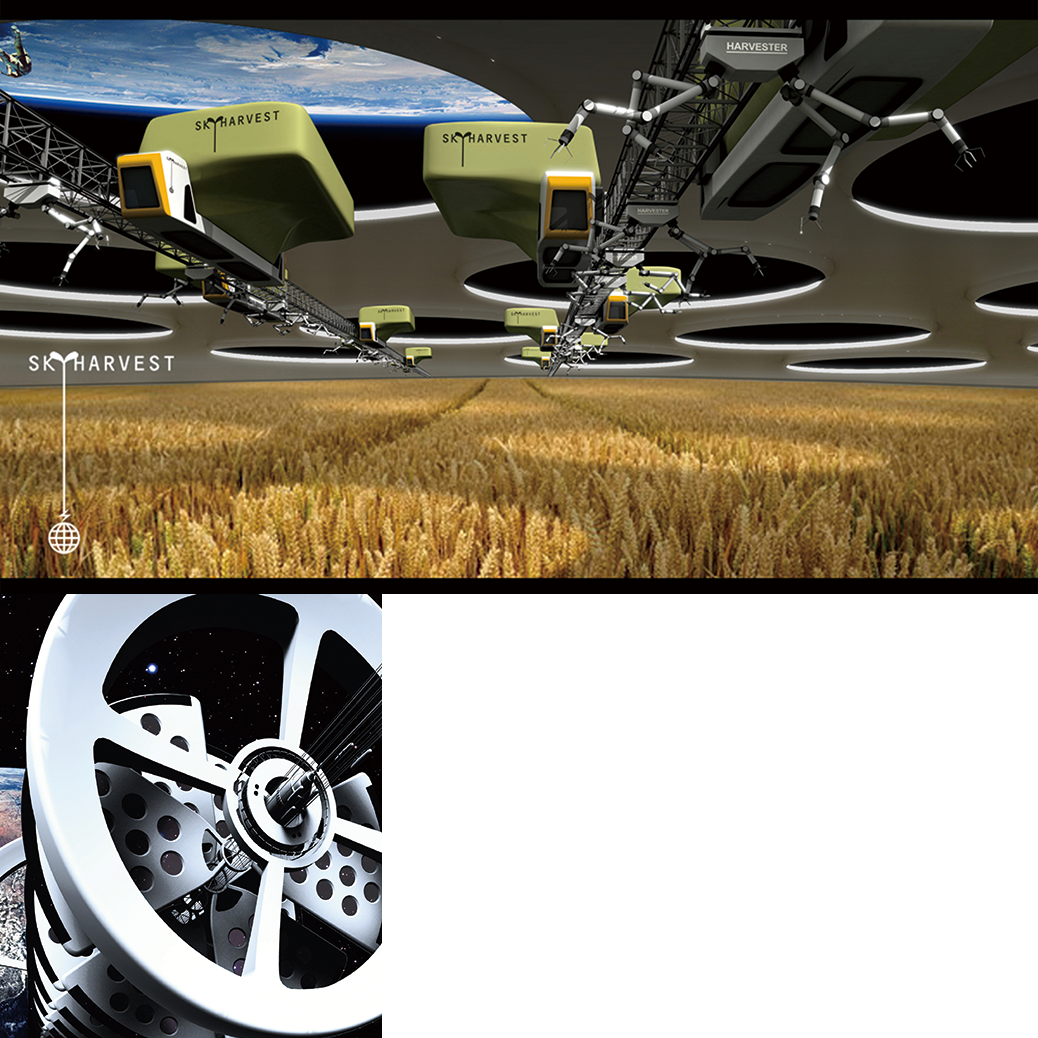
This project involves creating solar systems and zero gravity farms in space, and connecting them to Earth with a space elevator, with the aim of solving energy and food problems. It was designed to supply the food and energy that would become necessary when we enter an era of a global population of 10 billion in the year 2100.
“ENERGY Gift” is an ongoing project undertaken by ENERGY MEET, in collaboration with King Mongkut’s University of Technology Thonburi (KMUTT) in Thailand since 2014. It aims to provide energy, such as solar cells, to areas in Thailand that have not undergone electrification, such as offshore islands and hill tribe settlements.
There are small communities scattered across broad expanses of land in developing countries, particularly in Africa. In such cases, it is cheap and efficient to develop electricity grids and introduce, into each community, solar farms that are capable of generating the necessary amount of electricity. In the ENERGY Gift project, which targets such areas, design work is underway for a system that stores solar panels, frame racks, and battery systems compactly in containers, and which can be assembled into power generation systems at the local site.
The “Gift” in this project is energy itself. It is up to the residents of the community how they wish to allocate the energy received to various purposes, fulfilling their desires to store fish in refrigerators for sale, power machines to revitalize industries, or use the electricity in elementary schools. The goal of the project is to enable residents to formulate their own plans for harnessing the energy, in order to enrich and brighten up their communities.
In addition to product development, we are confronted by various other issues such as educating the residents. However, we are moving forward slowly but surely, spreading the message of social contribution while deepening communication with these small communities.
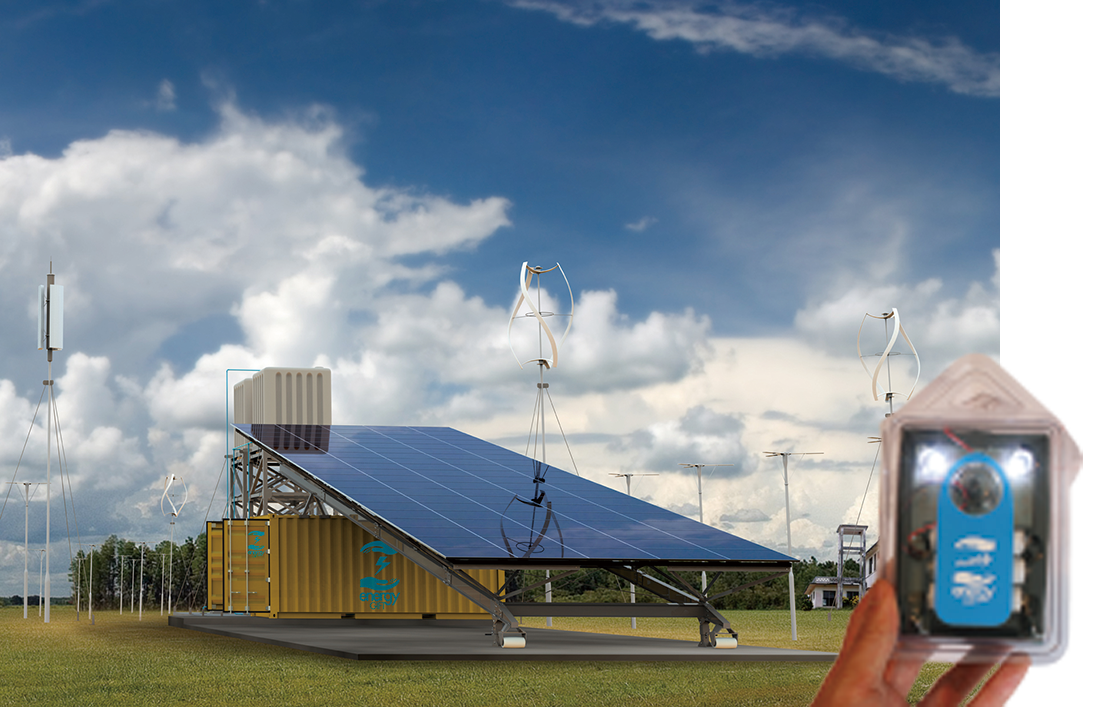
A collaborative project undertaken with King Mongkut’s University of Technology Thonburi (KMUTT) since 2014. It aims to provide energy, such as solar cells, to areas that have not undergone electrification, such as offshore islands and hill tribe settlements of Thailand and developing countries such as Africa.
I think that the conditions for an ideal city of the future lie in the sound establishment of the city within a specific area, without bringing in infrastructural facilities and resources. In short, it would be a city that has established systems that are capable of effectively producing and consuming everything within the area, including energy, water and sewage systems, air circulation, and food. Masdar City, located in Abu Dhabi, United Arab Emirates, was planned as a city that embodies the realization of this ideal vision, and it is scheduled to be completed in 2030. This project, which involves establishing a new city by utilizing the latest technology and harnessing the wisdom of many people, is one that aims to pass the baton on to future generations. The vision of a city that stands along in the middle of the desert exudes a sense of romance, and has drawn the attention of urban planners and architects around the world.
On the other hand, I think that rural villages of the past had developed in a compact manner that is close to that ideal vision. There are hearths and fireplaces in the homes, and this fire was used for cooking, heating, and lighting. They also served as the center around which families gathered. We could perhaps describe it as a complete micro ecosystem. A lifestyle that encompasses the circulation of energy used to exist in our lives. Today, we are injecting massive budgets, cutting-edge technology, and knowledge into creating such a lifestyle, and Masdar City is one such example.
Until about 2009, architects were attracted to research on “extreme architecture” and “mobile/lightweight architecture.” The subject of research covered designs that reduced architecture to the smallest packages while maximizing its performance in extreme environments. Architecture that expanded with air (inflatable), or which were lightweight and assembled together, were the mainstream. KMUTT managed a design studio based on this theme, and engaged in joint research with Japanese corporations on development projects that included building a shelter by assembling lightweight aluminum tubes. As the assumption is that such buildings would be erected in areas that have been subjected to severe conditions, such as remote areas, polar zones, and areas that have been hit by a disaster, the project was a very challenging one. Lightweight mobile architecture has the potential of being used in ways such as transportation and expansion in living areas in space, and we are currently still conducting research into it in classes on Building construction and design, and Design solution for extreme environment.
This style of “folding up into a compact form, and expanding and spreading out again” is also applied to the field of energy design and the ENERGY Gift initiative. The switch in direction from architecture to energy is a significant one, but they share the common aspect of bringing something to a place that has nothing. As such, I feel that the two fields of research are connected in various ways.
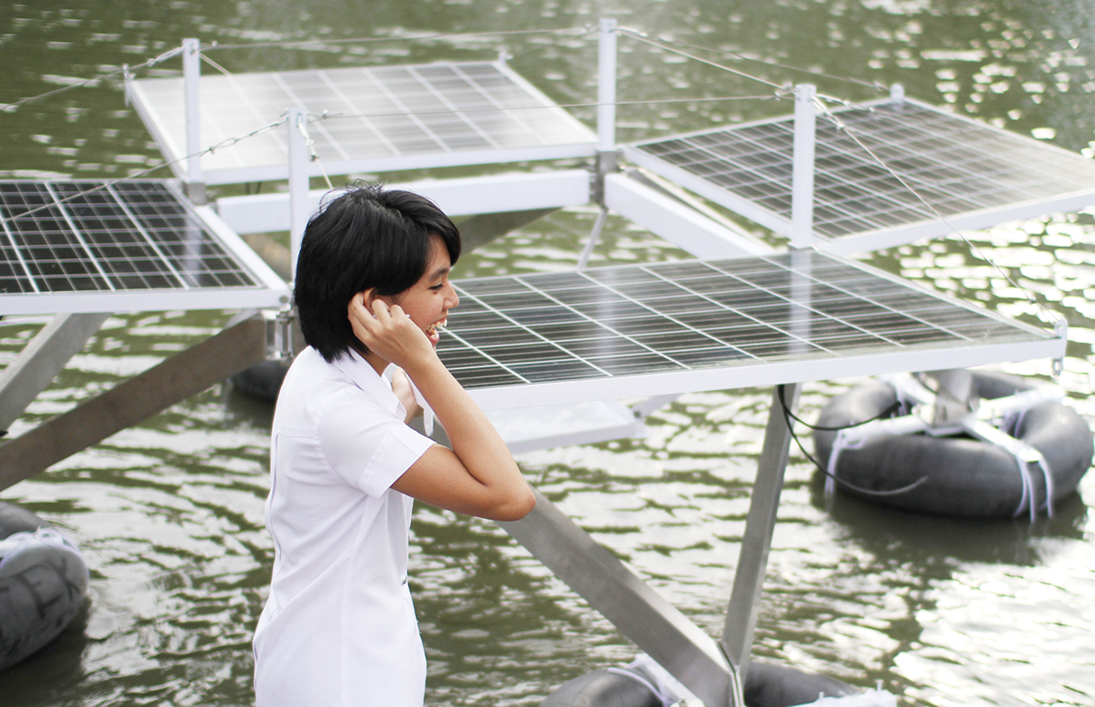
A floating solar power system developed in collaboration with Chulalongkorn University in Thailand. Created by architecture students and others in response to flooding disaster, which occur, without fail, somewhere each year. Specially designed to be an energy station for powering communication devices during a flooding disaster, and subsequently donated toNational Science Center for Education in Bangkok.
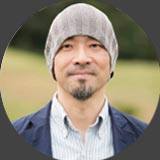
Takuya Onishi
Associate Professor, Faculty of Environment and Information Studies, Keio University. After graduating from Musashino Art University, he furthered his studies at the Architectural Association School of Architecture (AA School) in the United Kingdom, and received President’s Silver Medal from the Royal Institute of British Architects. He leads LAUNCHPAD05, a design unit for lightweight and extreme architecture. He also serves as a co-founder at ENERGY MEET Co., Ltd., a company that is engaged in the work of energy design.

2017.Feb ISSUE